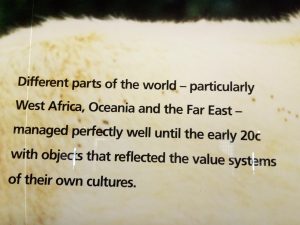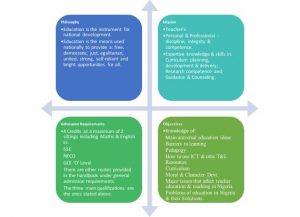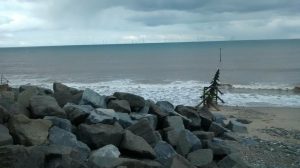
At the University of Manchester Museum’s money section there are display boards of different objects used historically as mediums of business transactions in West Africa (PDF), especially from the 13th century to the 19th century before the evolution of business transactions to the present systems in place. Two prominent objects I could easily relate with were the cowries (PDF) and the beads on display (you can read about a similar evolution of money in the US here). Even though I never witnessed the use of these two objects as means of business transactions, however, growing up in Nigeria I overheard adults talking about them with nostalgic reverence and I saw the enormous respect that such objects were accorded on TV programs as objects of cultural relevance, particularly as reflections of wealth and power of individuals, communities or people.
This isn’t a post on the history of money in West Africa or in the world in general, and as such I am not focusing on issues that relate to the culture of business transactions in that part of the world but it suffices to say that those objects on display only reflect eras in which there were heavy contacts between Africans, particularly Sub Saharan Africans and Europeans: slave trade and colonisation. Perhaps, there are other objects of value that were used as means of business transactions in West Africa but I’ll leave that to history experts to educate us on them. The two objects serve as important objects of historical mediums of cultural, political, economic and social interactions amongst the diverse cultures that make up the present day Nigeria.

In this post those two objects are like metaphors for the new national curriculum. While in those centuries the people used them as mediums of business transactions they still had the liberty to determine what goods and services they were exchanged for. Likewise, I’ve always thought about the need for the Nigerian education system to prepare its citizens for a diverse and heterogeneous society that it is. However, the national approach to public education in the country for a long time has been that of ‘one size fits all’. The system seems to create an outwardly homogeneous education curriculum that is inwardly deeply fractured. A good starting point is the most recent approach by the federal government through the Nigerian Educational Research and Development Council (NERDC) to introduce a new national curriculum for the country. On the surface the approach seems pragmatic and the best way forward, but there is a potential danger in a system that is homogenised because there is the need for emphasis on areas of knowledge and skills to focus on in any curriculum irrespective of how robust and inclusive a curriculum claims to be. So, the challenge is – which areas of knowledge and/or skills should a curriculum focus on?
The answer to the question above is not a straight forward one, and the issue should be approached on a case by case basis. For instance, a state like Lagos in terms of its curriculum needs might emphasise certain aspects of skills and knowledge while states like Taraba and Adamawa might focus on certain aspects that are more relevant to them; even at local governments level curriculum needs might still be different in certain aspects. Let’s look at educating children on sustainable environment. In a state like Lagos the emphasis can be placed on issues that relate to threats to oceans and coasts while in states like Taraba and Adamawa the emphasis can be on the threats of deforestation. This approach will help to make education more relevant and accessible to children while at the same time they are deeply engaged in acquiring important life skills on national (PDF)and global environmental issues (PDF).


